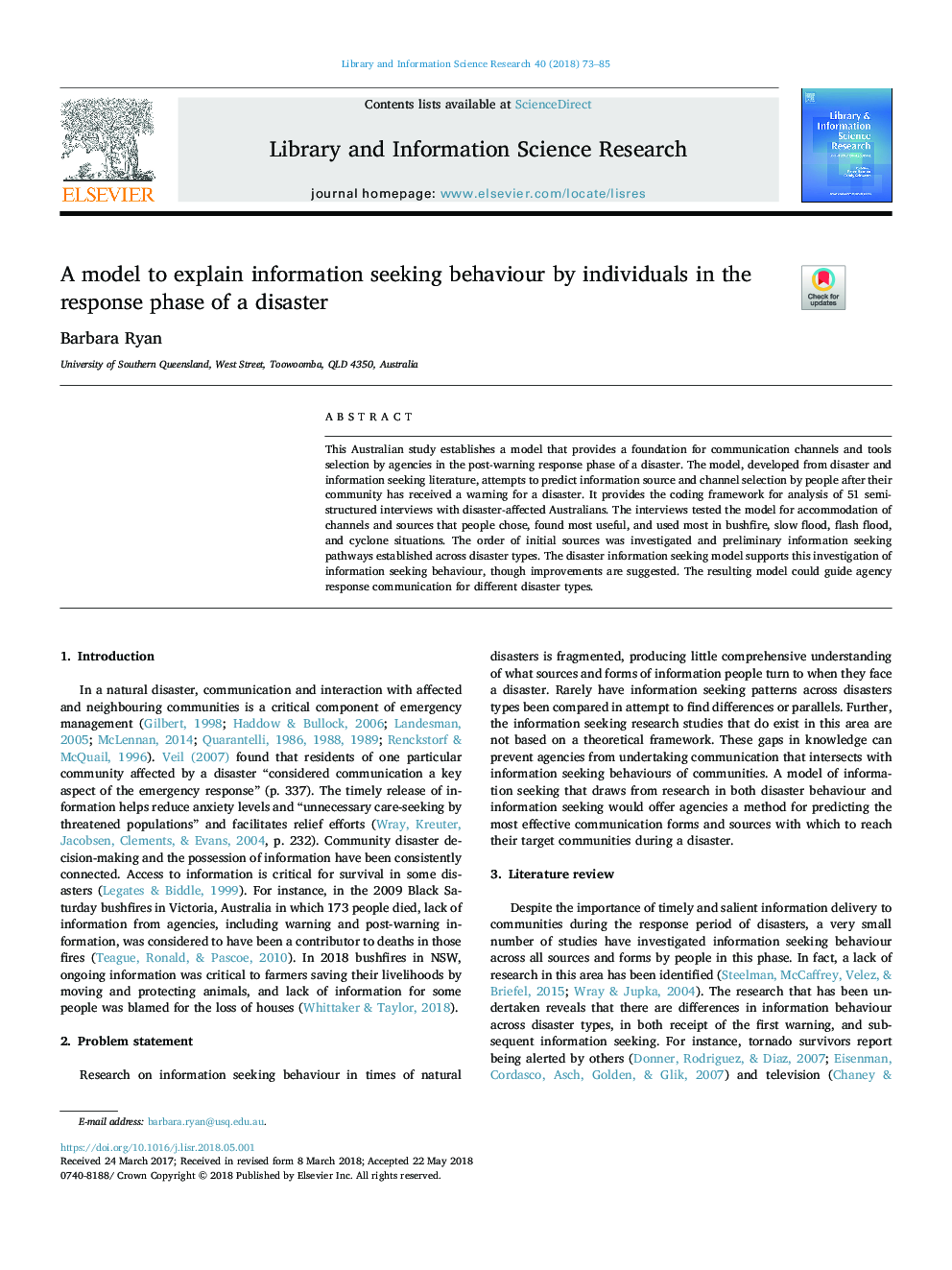| Article ID | Journal | Published Year | Pages | File Type |
|---|---|---|---|---|
| 7532461 | Library & Information Science Research | 2018 | 13 Pages |
Abstract
This Australian study establishes a model that provides a foundation for communication channels and tools selection by agencies in the post-warning response phase of a disaster. The model, developed from disaster and information seeking literature, attempts to predict information source and channel selection by people after their community has received a warning for a disaster. It provides the coding framework for analysis of 51 semi-structured interviews with disaster-affected Australians. The interviews tested the model for accommodation of channels and sources that people chose, found most useful, and used most in bushfire, slow flood, flash flood, and cyclone situations. The order of initial sources was investigated and preliminary information seeking pathways established across disaster types. The disaster information seeking model supports this investigation of information seeking behaviour, though improvements are suggested. The resulting model could guide agency response communication for different disaster types.
Related Topics
Social Sciences and Humanities
Social Sciences
Library and Information Sciences
Authors
Barbara Ryan,
